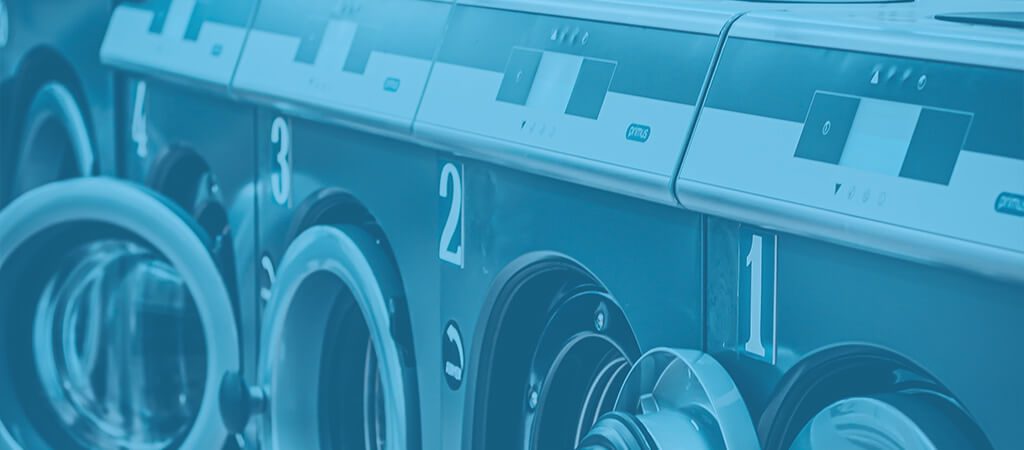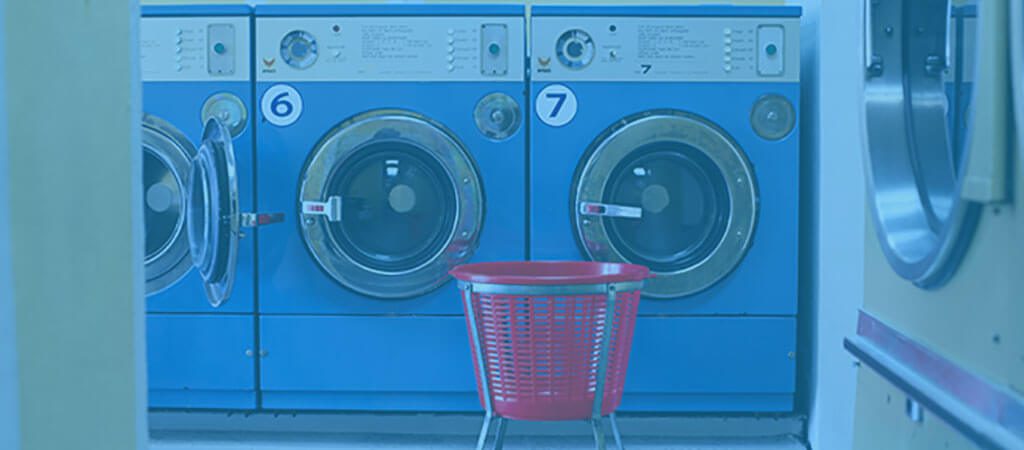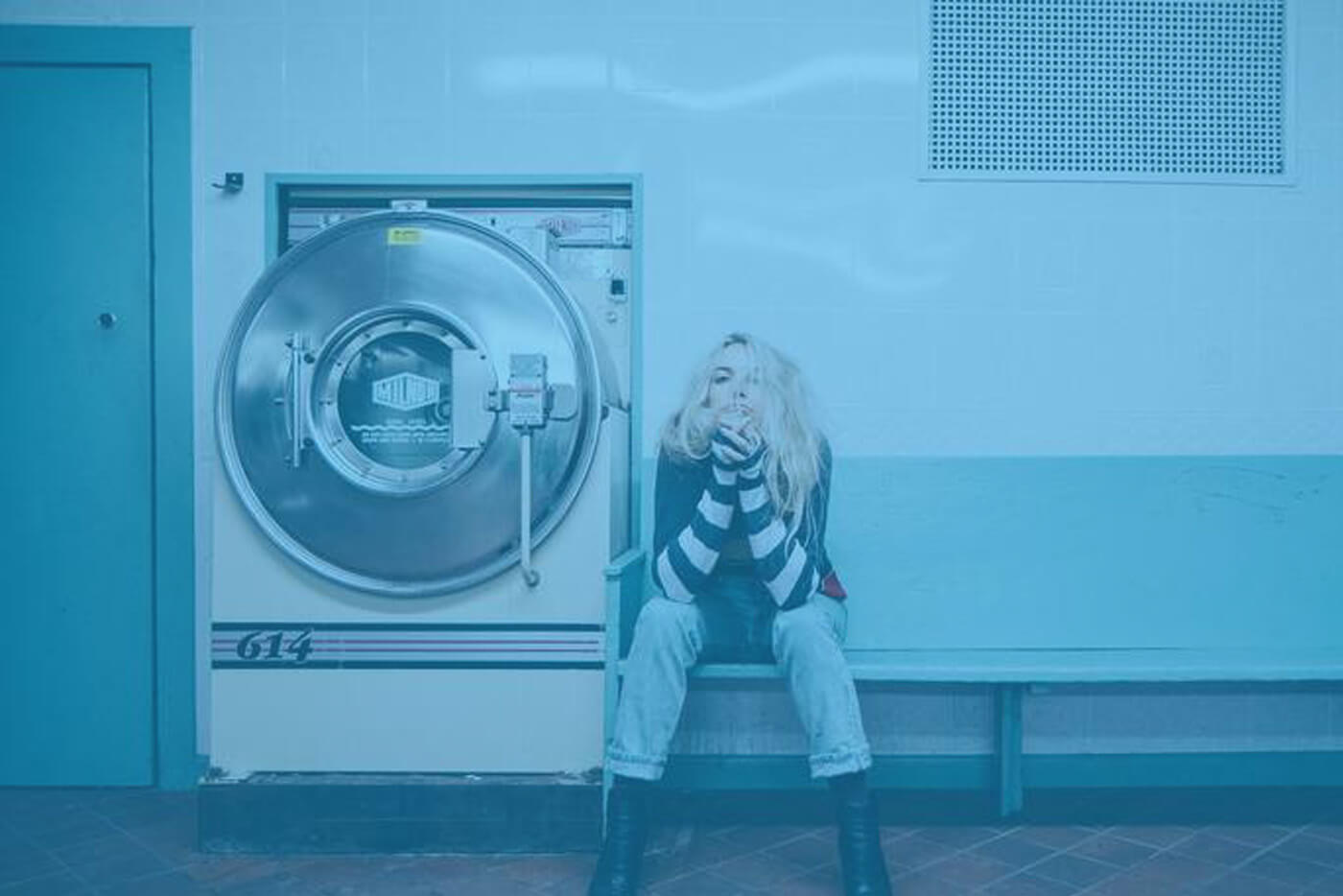Laundry is something we all have to contend with in our day to day life. While our modern laundry technology -- electric washers, high powered dryers, potent detergents, luxurious fabric softeners, anti-lint dryer sheets, and Shinepay’s space-aged QR code laundromat payment systems -- have dramatically simplified the process, most of us probably aren’t doing laundry to our full potential.
Fortunately, with just a little bit of forethought, you can get the most from your laundry. After reading this quick guide, you’ll be able to treat your clothes like royalty and finish your laundry more quickly and efficiently than ever before.
Let’s take a look.

Step 1: Learn the Language of Laundry: Laundry Symbols
Take a look at the tag on any of your garments or fabrics and you’ll find a variety of strange looking symbols. At first this might seem like some kind of arcane language you can’t decode, but this is actually a dead simple system which lets you know how to properly care for your clothes, towels, sheets, and other fabrics.
You can learn what these symbols mean in just a few minutes. Once you’ve got them down, you can learn how to care for your fabrics properly at just a glance.
Since there are a wide variety of materials and methods used to create fabrics, the proper way to care for one could be all wrong for another. To simplify things, manufacturer’s print laundry symbols on their tags which provide you with at a glance recommendations for the best ways to care for your fabrics.
There are a dozen or so common laundry symbols you’ll find on almost any fabric. The most important ones to watch out for indicate:
- How hot (or cold) to wash the fabric. These are shaped like a washing machine filled with water. Sometimes these include dots (more dots equalling a hotter wash) or include a number which indicates the optimal temperature.
- To bleach or not to bleach. These symbols are triangles. A normal triangle with nothing in the middle means you can use bleach. A triangle crossed out with an X means not to bleach. A triangle with lines in the center means to use non-chlorine bleach.
- Dryer symbols. These let you know how much heat to use, or if you should not dry them. These symbols look like a square box enclosing a circle. Dots inside the circle indicate how hot (more dots equalling a hotter dry.) If you see this symbol crossed out with an X, it means not to use a dryer.
- Ironing symbols. Shaped like an iron, these include dots inside to let you know how much heat to use with the iron (more dots equalling a hotter ironing.) If this symbol is crossed out with an X, don’t use an iron.
There are more laundry symbols you might encounter, but these four are the most common and the most important.
2. Soak and Pre-Treat Hard Stains
Some stains are too tough to get out with a washing alone. If your fabrics are heavily stained or extremely dirty, you should do a bit of pre-treatment.
There are a few different ways to pre-treat, depending on what types of stain your dealing with.
- Coffee, fruit, wine, or sweat stains: Pour a small amount of your favorite laundry detergent directly onto the stain. Rub the fabric together to work the detergent in. You can also use a soft-bristle toothbrush to help work out the stain if it's particularly bad. Let the detergent set on the stain for five to ten minutes before washing.
- Cooking grease or butter stains: Pour a small amount of dish washing detergent onto the stain and rub it in. Repeat with laundry detergent as outlined above, then wash.
- Dirt, motor oil, or blood stains: Add a small amount of laundry detergent to a tub of water. Place the fabrics inside and allow them to soak for 30-45 minutes before washing.
3. Separate Your Loads
To optimize the cleanliness of your clothes and the efficiency of your washing and drying, it’s best to separate your laundry based on fabric type and color.
Here are some general sorting guidelines:
- Dirtier Laundry: If your dirty is extremely dirty, don’t throw it in with less dirty fabrics. Instead, separate the especially dirty pieces for their own wash on a heavy-duty cycle with a longer duration. Not only will this help get them cleaner, it will also prevent any residue dislodged in the wash from finding its way to your cleaner fabrics.
- Color: Deeper, darker colors have the potential to “bleed” the dye in their fabrics during a wash. This can have the undesirable effect of dying your lighter colored fabrics in the wash. For best results, separate whites, light colors, and dark colors into different loads.
- Fabric Type: Separate your more durable fabrics from your lighter and less durable fabrics. Avoid washing garments with buttons or zippers with knits, lingerie, or frilly fabrics which can catch on buttons and zippers and cause damage.
- Weight: To optimize drying and ensure an even clean, wash heavier fabrics like towels and blankets separately from lighter items like t-shirts and dresses.
4. Use the Right Amount of Detergent
Using too much or too little detergent is wasteful and inefficient. Use too little and your clothes might not come out clean, but use too much and you’ve simply washed your money away.
There are a lot of different detergents available on the market today. Most of them will include some instructions for how much you should use. Always read the labels carefully and follow the manufacturer’s recommendations for the proper amount of detergent to use. Additional information may be available from your washing machine’s instruction manual.
There are four key factors which influence how much laundry detergent you need to use in a given load:
- Load and Drum Size: Depending on how big your washing machine’s capacity is (Drum Size) and how big your load is, you’ll need to vary the amount of detergent. Larger loads require more detergent.
- Dirtiness: If you’re working with a particularly dirty load of laundry, it’s a good idea to add in a bit of extra detergent to help fight off stains and dirt.
- Water Hardness: The “hardness” of water varies from location to location and from building to building. You can get your home’s water supply tested for hardness, or consult the documentation from your local water supply utility on water hardness levels to determine how hard the water you’re washing with is. Harder water requires more detergent use.
- Washer Efficiency: If you’re working with a modern High Efficiency (HE) washer, you will need to adjust the amount of detergent you use. Consult the documentation for your washing machine, or look for specially made HE washer detergent. If you’re using an older machine, or a washing machine not advertised as an HE washer, you probably don’t need to worry about this.
5. Keep An Eye On How You Load Your Washing Machine
When loading your washing machine, you want to be sure not to stuff it too full of laundry. Your laundry needs enough space to tumble around and allow water to circulate during the wash cycle.
Try to stick to smaller loads and never overload the washer, which can put unnecessary strain on the machine and potentially even damage your clothes.
One neat rule of thumb (or rule of palm) is to put your hand into the washer after loading and see if your palm can fit between your clothes and the wall of the washing machine drum. If it fits, you’re good to go.
6. Use the Right Wash Cycle and Temperature
All of those different options on your washing machine’s dials are there for good reason. Using them properly is the key to getting an efficient wash.

First, it’s important to select the proper cycle. Knowing your laundry symbols can help with this. Here’s the most common cycle options and what they’re optimized for:
- Regular Cycle: Best for removing stains and dirt from durable fabrics. Uses a rapid agitation and spin cycle. Good for whites, towels, sheets, and especially dirty or stained fabrics.
- Delicate Cycle: Best for giving your less durable fabrics a gentle washing. Uses a slow and gentle agitation and spin cycle. Ideal for silks, wool, and any items which indicate gentle washing on their tags.
- Permanent Press Cycle: Best for cleaning up every-day clothes, especially those prone to wrinkling. Combines a rapid agitation with a slow spin cycle. Ideal for non-cotton items such a jeans, polyester, rayon, and knitted fabrics.
Next, you need to dial in the right temperature. Once again, the laundry symbols are your friend for determining what temperature you should wash each item at. Here’s a general guideline:
- Cold Setting: Best for dark colors that may be prone to fading or delicate fabrics which don’t respond well to heat. Conserves energy and is very gentle on fabrics.
- Warm Setting: Increases the cleaning power but still helps to minimize loss of color. Great for permanent press cycles, towels, and synthetic fabrics.
- Hot Setting: Drive out stains and gives the deepest cleaning power. Ideal for whites such as towels and sheets, or extremely dirty items with tough to remove stains.
7. Dry Smart
Once you’ve finished up the washing, it’s time to give your laundry a nice spin in the dryer.
Or not. Some clothes don’t tolerate the dryer well at all. You can find laundry symbols for hang dry, or “no dryer.” Don’t toss these in the dryer with the rest of the load. Separate them out and let them dry as recommended.

You may also find temperature recommendations on your fabric’s laundry symbols. These help you know how much heat to set on the dryer.
When loading the dry, it’s important not to overload it. You need to allow enough room for the clothes to tumble and for air to freely circulate throughout the dryer.
Toss in a dryer sheet or two to add a bit of extra freshness, cut down on static, and help minimize any lint on your clothes. Oh, and don’t forget to clean the lint trap between uses!
